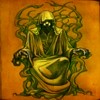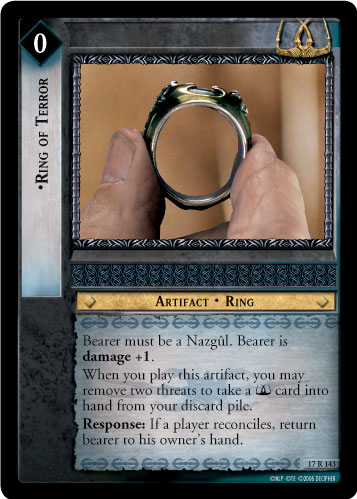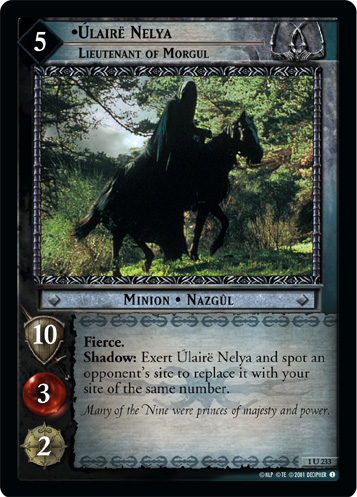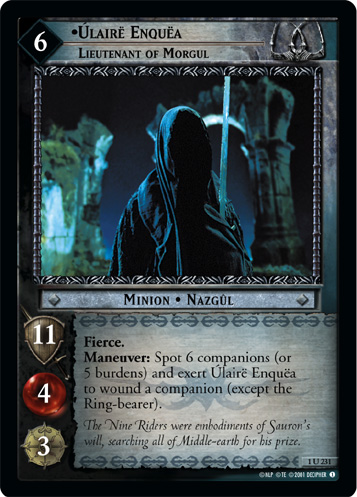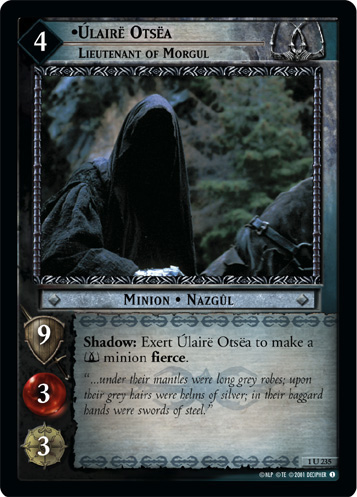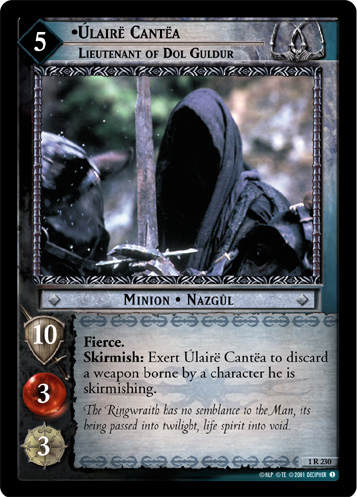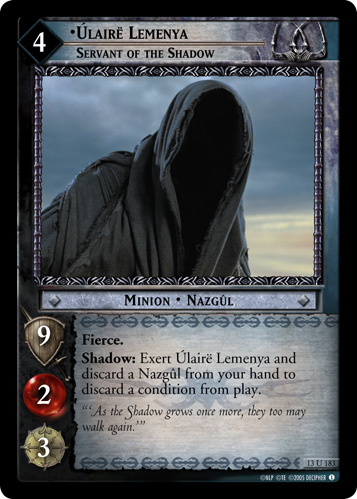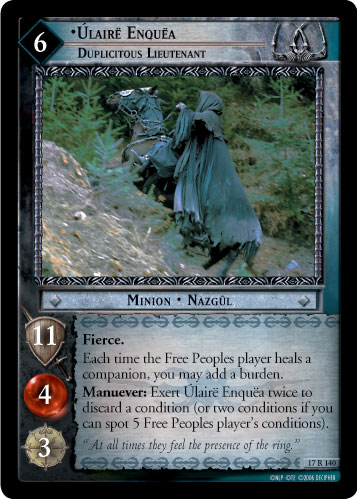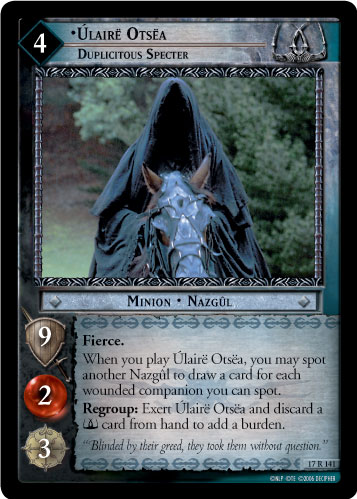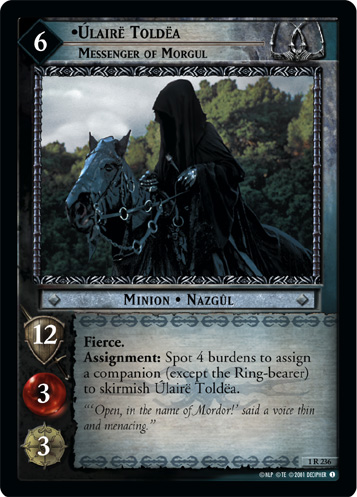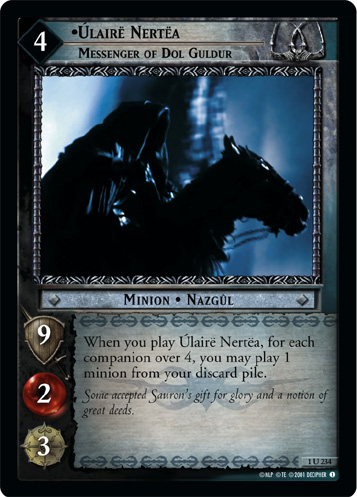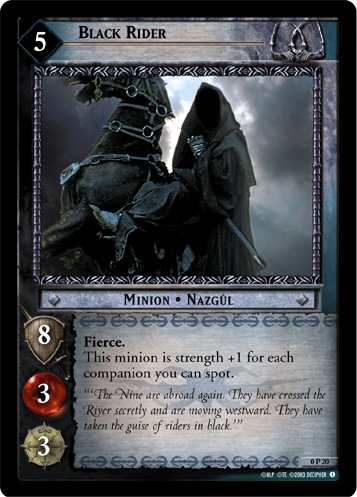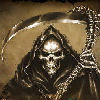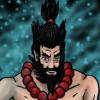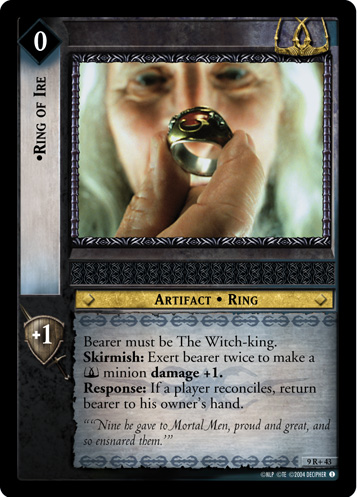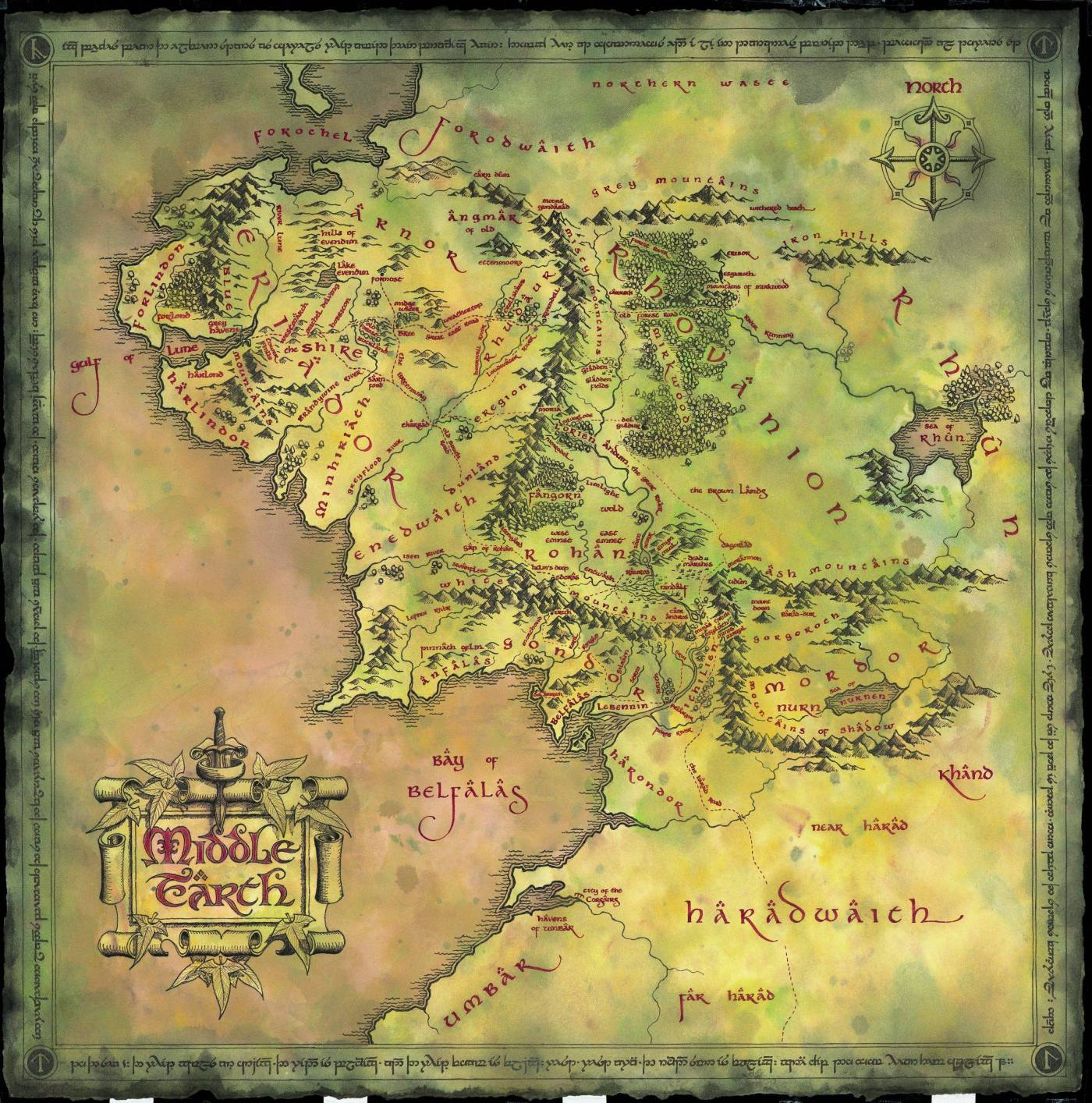#Shadows:(continued ...)
------------
Detour to the shadows, part #2:Now, let's turn to the 'wraith' part:
Wraith (terminology):
Besides denoting the human spirit or soul, both of the living and the deceased, the Old English word is used as a synonym of Latin spiritus also in the meaning of "breath" ... It could also denote any good or evil spirit, i.e. angels and demons ... The now prevailing sense of "the soul of a deceased person, spoken of as appearing in a visible form" only emerges in Middle English (14th century). The modern noun does, however, retain a wider field of application, extending on one hand to "soul", "spirit", "vital principle", "mind" or "psyche", the seat of feeling, thought and moral judgement; on the other hand used figuratively of any shadowy outline, fuzzy or unsubstantial image ...
In Tolkiens writings there were different sorts of wraiths, mostly dead Men like the wraiths of Tyrn Goerthaid (the Barrow-downs), "the dead Men of Dunharrow", the wraiths of the Dead Marches; also, in the Hobbit Sauron is named "The Necromancer", hinting at wraiths being present in Dol Guldur.
The Nazgûl were
not this sort of wraiths, they were 'undead' ... and they were
Shadows.
Although not an unambiguous terminology, Tolkien often used 'Shadow' synonymous with 'Dark Lord' - not only in connection with Sauron himself, but also in a more general way to denote a powerful and evil Lord, using black magic to exert his power over others, and to extend his own span of life.
One example is "
The New Shadow" - a fragment of a story from the 4th Age, in which a new Dark Lord is rising:
from History of Middle-earth, Vol. XII, "The New Shadow":
... "the roots of Evil lie deep, and from far off comes the poison that works in us, so that many do these things - at times, and become then indeed like the servants of Melkor."
His voice sank low and could scarcely be heard above the murmur of a sudden chill wind in the leaves, as the sun sank behind Mindolluin.
"You have heard then the name? ..."
... with hardly more than breath he formed it:
"... of Herumor?"
This new Shadow might eventually be the same as one of the evil lords of the Black Númenoreans at the end of 2nd Age, because it is said, that Sauron gave them strange magical powers as reward for their service - from the Thain's Book:
Herumor & Fuinur:
Black Numenorean lords of the Haradrim. Herumor and Fuinur were Men of Numenor who had been corrupted by Sauron and were therefore known as Black Numenoreans. They established domains in Harad in southern Middle-earth and became powerful lords. Herumor and Fuinur fought for Sauron during the War of the Last Alliance ...
Names & Etymology:
The name Herumor means "black lord" in Quenya from heru meaning "lord" and morë meaning "black." The name Fuinur is derived from fuinë meaning "shadow."
[BTW, none of those two were among the Nazgûl]
Tolkien did use the term 'Shadow' for the Nazgûl; the most direct example is the text where gives the 'name' of the second-in-chief occupying Dol Guldur:
from 'Unfinished Tales: The Hunt for the Ring'
... the second to the Chief, Khamûl the Shadow of the East, abode in Dol Guldur ...
We don't know the etymology of 'Khamul' because it's language is unknown. Some Tolkien linguistics have speculated, that if the name is in Black Speech, it might be another word analogous to Nazgûl because of the ending
-ul, which is a well known suffix in BS:
-ul: pronominal suffix "them".
If this should be correct, then 'Khamul' would not even be a proper name ... however, it is only speculation, and we'll never know. It's not important either, in relation to 'naming' the Nazgûl ... the
really important part of that text is the addition "the Shadow of the East", which in plain words could be translated into "the Dark Lord of the East", i.e. as a sort of title.
Because of the power of the nine rings, The Nazgûl all "became mighty in their days, kings, sorcerers, and warriors of old. They obtained glory and great wealth" ... and so, like Khamul, all the other Nazgûl were also 'Shadows' ...
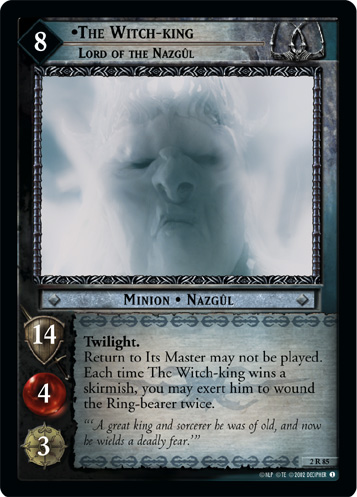
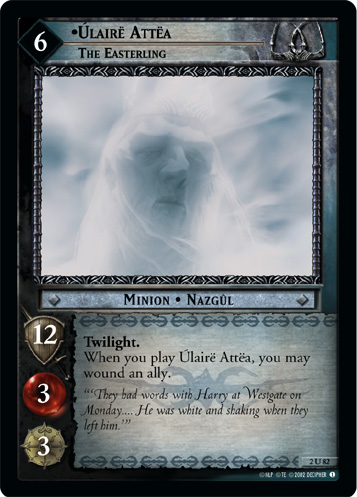
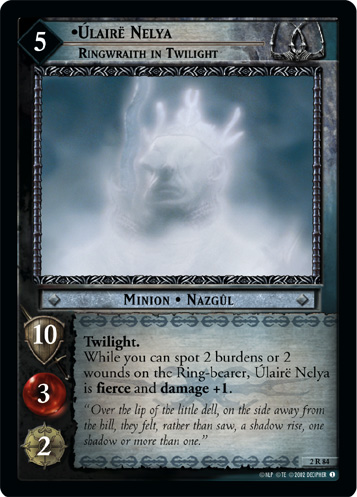
... but of their origin we only know that three of them were of the race of the Black Númenoreans, and that the Witch-king probably was one of those three. A note written by Tolkien in the manuscript of his "Nomenclature of The Lord of the Rings" says:
"the name and origin of the Witch-king is not recorded, but he was probably ... of Númenorean descent." (The Lord of the Rings: A Reader's Companion, p. 20)
Edited by Námo, 07 November 2011 - 10:10 PM.



